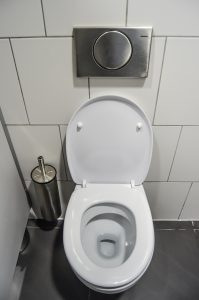 When you have plumbing issues arise in your home, you may feel a little unprepared. However, many plumbing problems can be solved easily without the help of a professional. Replacing an old toilet flapper is a project that’s fairly simple, inexpensive, and quick to complete.
When you have plumbing issues arise in your home, you may feel a little unprepared. However, many plumbing problems can be solved easily without the help of a professional. Replacing an old toilet flapper is a project that’s fairly simple, inexpensive, and quick to complete.
An old toilet flapper is often the cause for a continuously running toilet. After time and significant use, the rubber wears out and can get hard, making it hard to seal tightly and stop the flow of water like it’s supposed to. Replacing the toilet flapper is a quick fix! Keep reading to find out how you can check and fix your toilet flapper in four easy steps.
Turn off the Water and Remove the Old Flapper
Turn the water to the toilet off and then drain the tank of the toilet by flushing it. Find the old flapper and unhinge the chain from the handle rod of the toilet. Pull each side of the flapper (the ears) to unhook it from the flush valve.
Prepare the New Flapper for Install
Most commonly, toilets have flappers attached by the ears on the sides of the flush valve. If your toilet is built this way, you’ll need to cut the ring off on the back of the flapper. If your valve doesn’t have side hooks for the flapper, you’ll have to use the ring to put the flapper into place.
Install the New Flapper
Once the new flapper is prepared, put it in place and be sure to hook each ear tightly onto the flush valve. Then, attach the flapper chain onto the toilet handle rod and if needed, adjust the chain. The chain needs to be long enough to allow the flapper to sit firmly in place, but it shouldn’t be too long, as it could get caught under the flapper as the water flows out.
Test It
Once it’s installed, turn the water back on and test it by flushing the toilet a few times.
The great news is that you should be able to easily fix this flushing mechanism on your own. If for some reason your toilet continues to run after the new flapper is installed, you may need to get an expert opinion. Once the flapper is fixed, the toilet should flush well and stop running, which means that you’ll be saving precious and expensive water!

